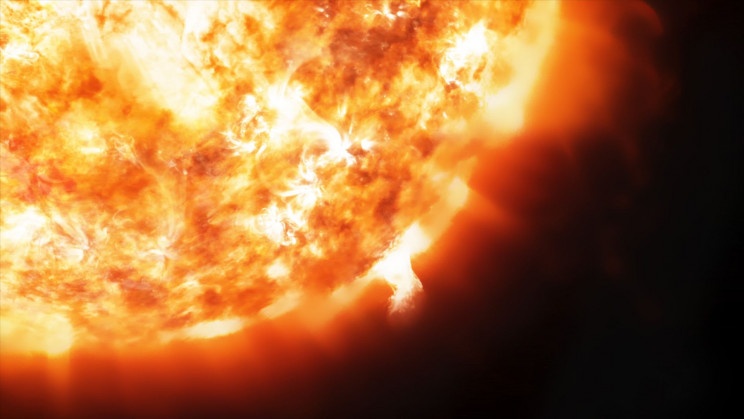Solar Spot Directly Facing the Earth
Space weather experts are keeping a keen eye on the Solar Spot Directly Facing the Earth, which has doubled in size in the past 24 hours, NASA reported.
Solar spots, commonly called sun spots, are temporary spots that appear darker than the solar surface. A sunspot can be as small as 10 miles (16 km) but can also grow to hundreds of thousands of miles in diameter, making them visible from Earth, even without a telescope. Sunspots can last from a few days to a few months and even move across the solar surface as they expand and contract in size.

While the exact cause of the sunspot is not completely known, scientists are of the view that this phenomenon is caused by the concentration of magnetic flux, which inhibits the convection process of the Sun. Sun spots also occur in the active regions of the solar surface and other activities such as solar flares and coronal mass ejections.
Sunspot AR3038
According to Spaceweather.com, Sunspot AR3038 is directly facing Earth and has an unstable beta-gamma magnetic field. The website reported that the sunspot has grown and doubled in size in the past 24 hours.
A sunspot can either die on the solar surface or burst, producing a solar flare. According to NASA, a solar flare contains an intense burst of radiation as the magnetic energy is released from the sunspot. Earlier this year, in March, as many as 17 eruptions were recorded from a single sunspot that sent out solar flares at the speeds of two million miles an hour.
Space may not have an atmosphere, but the weather can be really bad out there. High energy bursts at mind-boggling speeds can be a safety risk for astronauts. This is why organizations such as the National Oceanic and Atmospheric Administration (NOAA) track space weather.
How bad can solar flares be?
Solar flares are classified into five classes, A, B, C, M, and X, with each succeeding class 10 times more powerful than the previous class. The AR3038 sunspot is expected to give out a Class M flare, which is medium in intensity.
Unless you are an astronaut currently on a mission in outer space, you will be protected by the Earth’s atmosphere, although there is a good chance that your radio equipment might have a small blackout.
When X-rays and ultraviolet radiation in solar flares hit the Earth’s atmosphere, they ionize the upper layers, which are used for high-frequency communication such as navigation systems and radio communication. When radio signals sent from Earth reach the ionized layers of the atmosphere, they either get degraded or absorbed, leading to a radio blackout.
According to the Space Weather Prediction Center of the NOAA, there is a 10 percent chance that a solar flare will occur soon and up to 30 percent that it will lead to a low-to-medium intensity radio blackout.
Solar flares are also responsible for phenomena such as the Northern Lights; if the flare does occur, it should improve your chances of seeing them.



